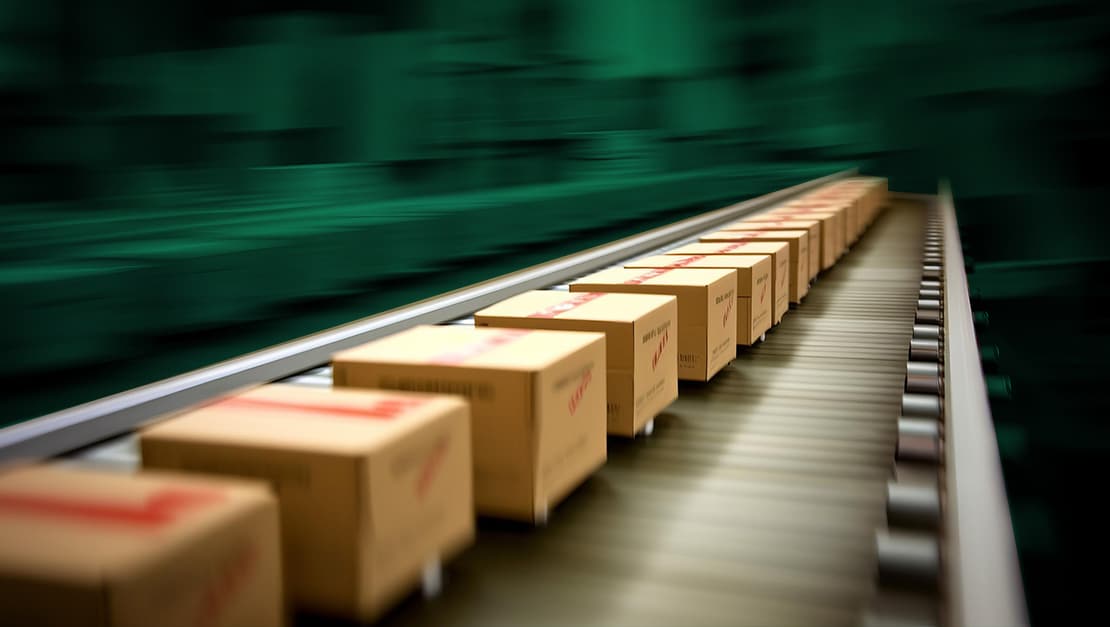Workflow automation has become an essential business tool in many industries. From automating repetitive tasks, automation can improve the efficiency of a variety of procedures, reducing errors and saving on costs in the process.
Industries like food manufacturing, fleet management, and logistics and warehousing are using the power of workflow automation to streamline operations and stay competitive in an evolving market. New workflow automation technologies are allowing companies to optimize operations so that employees can focus on more strategic tasks, putting repetitive or manual workflows on autopilot.
In this blog post, we’ll delve into how these three specific industries are using workflow automation to improve industry standards. We’ll explore real-world examples of workflow automations in action and highlight the benefits these technologies bring to each industry.
Food Manufacturing: Tasting Success with Automation
As a highly regulated industry that demands precision, consistency, and safety above all, workflow automation in this field is both challenging and transformative. On the one hand, having employees ensure food safety and quality that’s in line with regulations is essential, but with automation, a lot of those processes can increase efficiency and reduce wasted resources but require less human intervention. Today, many businesses in the food industry have been able to strike a balance between automation for efficiency and human oversight for safety. Here’s a look at some workflow automation examples to see how this works.
Automated Batch Processing
In food manufacturing, automated batch processing relies on technology to precisely control the mix of ingredients. Using workflow automation software and advanced sensors, automation technology can ensure the right proportions of ingredients are used, leading to a more consistent product and less wastefulness. By automating this workflow, companies can ensure ingredients are measured more accurately, cutting out opportunities for human error.
Real-time Quality Control Systems
Automation isn’t meant to entirely replace human quality control, but enhance it with additional systems that can elevate existing quality standards. Vision systems and sensors can be used in food manufacturing quality assurance processes to detect issues in real time, such as packaging flaws, foreign objects, or product defects. Combined with artificial intelligence (AI), these flaw detection systems can become smarter over time and help companies reduce recalls, improve product safety, and safeguard brand reputation. Nestlé Purina, which produces pet food products, recently implemented robotic dogs to automate thermal and acoustic inspections in its packaging line, helping the company save both time and money.
Supply Chain and Inventory Management
Workflow automation solutions can help food manufacturers track ingredients from when they enter their warehouse until they become a finished product, creating greater traceability into the entire supply chain. By automating supply chain processes, businesses can better optimize inventory levels and reduce food or raw ingredient spoilage, enhancing food safety across the board.
Fleet Management: Driving Towards Efficiency
Fleet management involves the complex organization and coordination of large fleets of vehicles. This includes tasks like planning routes, managing maintenance and breakdowns, and ensuring the safety of drivers on the road. Automation plays an important role in enhancing fleet operations by making processes less reliant on manual intervention and more independent so that employees can free up their schedules to work on more strategic tasks. Let’s look at some workflow automation examples in the fleet management industry to understand how this technology is making processes more streamlined.
Automated Routing and Dispatch
Automated routing and dispatch systems rely on GPS and routing software to plan and optimize delivery routes in real time. By looking at factors like current traffic conditions, historical traffic trends, and delivery priorities, automation technologies can ensure fleet vehicles are taking the best route. This helps companies save on fuel costs and ensure deliveries are made on time, leading to better customer satisfaction.
Vehicle Predictive Maintenance
Together with AI technology, automation can gather real-time vehicle usage data to gather information on maintenance needs. Maintenance can be automatically scheduled by analyzing vehicle performance metrics and historical trends, making it easier for fleet managers to stay ahead of potential issues before they become larger problems. This proactive approach can help fleet management companies prevent breakdowns, loss of time and resources, and reduce maintenance costs. The municipality of Long Beach, California, for example, implemented a new AI system to manage maintenance for its fleet of 600 vehicles, automating diagnostic processes and reducing yearly costs in the long run.
Compliance and Reporting
Automation helps fleet management companies stay compliant with regulations by optimizing reporting processes. Automation technologies can track and record data related to vehicle inspections, maintenance needs, emissions, and driver hours, helping companies stay in line with regulatory standards. This level of reporting automation also helps companies avoid fines, cut down on administrative tasks, and improve the overall efficiency of their fleet.
Logistics and Warehousing: Streamlining for Success
Like every industry, logistics and warehouse teams face unique challenges. Inventory management, order processing, and transportation planning are all core parts of this industry. When companies rely on traditional and manual methods to handle these workflows, they’re likely to contend with human error, wasted resources, and a lack of transparency. With new methods of automation available today, logistics and warehouse teams can address these challenges and access solutions that improve efficiency, accuracy, and supply chain management. Here’s a look at some warehouse and logistics workflow automation examples.
Automated Warehouse Management Systems (WMS)
WMSs rely on automation to tackle tasks related to inventory, such as picking items, packing them, and shipping them out. Using technologies like RFID, scanners, sensors, and automated guided vehicles (AGVs), these solutions can help facilitate smoother operations to improve the accuracy of inventory and shipments. For example, Amazon relies on 750,000 robots spread out over its global locations to facilitate tasks like picking inventory, packing orders, and optimizing storage. Automated warehouse management systems enable companies to improve overall warehouse productivity by decreasing reliance on manual processes so that there are fewer errors and quicker workflows.
Robotic Process Automation (RPA) for Order Processing
RPA helps streamline different order processing tasks, like order entry, tracking, customer communication, and more. These bots can process orders more quickly and accurately than human workers, helping companies reduce processing times to enhance customer satisfaction. This also helps warehouse and logistics teams reduce costs thanks to better operational efficiency and save on resources used for order processing.
Smart Transportation Management
Transportation Management Systems (TMS) can automate tasks related to carrier selection, freight auditing, and payment processing. TMS systems rely on data analytics and automation systems to optimize transportation routes, which can help organizations cut down on shipping costs and improve delivery times. With automated TMS solutions, companies can enhance logistics management and supply chain efficiency.
Workflow Automation Implementation Strategies and Best Practices
The process of implementing various workflow automation solutions in a business doesn’t happen overnight. There’s a lot to consider, starting with identifying areas of your business that can most benefit from automation. Companies also need to take various factors into account, like scalability, integration with legacy systems, and ease of use for company-wide adoption. Adopting the right tools for your company’s needs is critical, as not every automation technology will offer the best solution to your teams.
One of the most crucial aspects of successful workflow automation implementation is staff engagement and training. Employees who don’t see the benefits of workflow automation tools are less likely to use them, which can in turn reduce the ROI of these new systems. Employees must understand how automation will impact their roles. Organizations need to be transparent in their communications about these changes while encouraging feedback from employees to identify areas of concern. Additionally, ongoing training and learning are essential to the successful adoption of a new automation system.
Finally, to best gauge the ROI of your new implementation, your organization needs to be prepared to continuously monitor the effectiveness of your new automation strategies. This can include tracking metrics and key performance indicators (KPIs) to evaluate efficiency gains, cost savings, and error reductions, among others. It’s important to periodically review and adjust workflow automation solutions based on feedback, stakeholder evaluation, or evolving business goals.
Harnessing the Transformative Impact of Workflow Automation
Based on the workflow automation examples we looked at above, it’s clear to see how automation technology is set to change these industries and others. With many companies already adopting new systems to enhance their productivity and work processes, it’s time to consider workflow automation implementation if you haven’t already.
While implementation is an essential consideration when assessing new solutions, it can be a disruptive process. That said, some automation technologies, like aiOla, allow for quick and easy adoption. aiOla, a speech AI technology, enables a variety of teams to turn speech into action by using natural language to trigger automations and collect critical business data. With aiOla, teams can complete inspections using only speech in a matter of seconds, improve predictive maintenance on machinery, and cut down on manual operations while remaining entirely hands-free.
Schedule a call with one of our experts to learn more about how your business can take advantage of workflow automation technology with aiOla.








